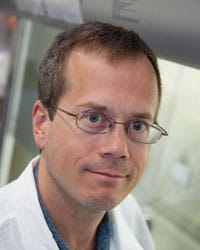Breakthrough stomach organoids open doors for new insights into ulcers, cancer, diabetes and other diseases
In 1984, Australian physician Barry Marshall resorted to drinking a petri dish brimming with H. pylori bacteria and then treated himself with antibiotics to prove that ulcers were caused by an infection, not by stress, spicy foods or stomach acid.
Thirty years later, James Wells, PhD, and fellow researchers with the Divisions of Development Biology and Endocrinology are using human pluripotent stem cells as building blocks to create functional, three-dimensional, architecturally complex stomach tissues in the laboratory. Their anatomical breakthrough will enable researchers to study stomach development and a wide range of diseases including peptic ulcer disease, cancer and diabetes – without resorting to Marshall’s drastic solution.
Until Wells’ team’s discovery, experimental models of human stomach tissue did not exist, and mouse stomachs and other animal tissues have not been ideal models for studying stomach diseases in humans.
In an online Oct. 29, 2014 study in Nature, Wells described how his team performed a series of manipulations of the growth environment to guide human pluripotent stem cells (hPSCs) – stem cells that can grow into any type of tissue – into forming tiny, pea-sized human stomachs, dubbed “human gastric organoids” (hGOs).
In collaboration with colleague Yana Zavros, PhD, at the University of Cincinnati, Wells demonstrated the hGOs can be used to study how the bacteria H. pylori causes peptic ulcers and stomach cancer, as the team was able to observe cellular and tissue changes associated with the bacteria infection.
The team’s accomplishment represents the first time that researchers have produced a 3-D model of the human stomach and plans to use a similar approach to develop other “mini-organs,” including the lungs and esophagus. It also creates possibilities for studying new drugs, building tissue models of stomach cancer and investigating the underpinnings of obesity-related diabetes.





